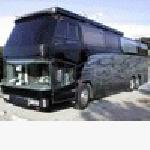| Author | Message | ||
| Kenneth Hintermeister (Barbwire)
Registered Member Username: Barbwire Post Number: 17 Registered: 6-2005 Posted From: 64.12.116.203 Rating: N/A |
Need good advice, no BS. I now have 10 Rv/marine deep cycle series 27 that are 4 yrs old and are dying, Thinking of going to AGM's. Where can I get em at a reasonable price. I'm running a 4 cu ft freezer off my inverter w/ 12 amp draw 24-7. Have 2 120 watt solar panels and 400 watt windcharger, still don't keep up. 6-7 hrs gen time daily. | ||
| Tim Brandt (Timb)
Registered Member Username: Timb Post Number: 295 Registered: 10-2003 Posted From: 74.244.14.221  Rating: N/A |
Ken, I used AGM's on a livaboard sailboat I had but they did require a different charging strategy than Gel or flooded as I recall. I ended up getting a part time job at west marine one enight a week unloading the truck so I could get the employee discount. Cost + 10% or roughly 40% off retail | ||
| Sean Welsh (Sean)
Registered Member Username: Sean Post Number: 819 Registered: 1-2003 Posted From: 67.142.130.14  Rating: N/A |
"AGM's" is not enough information. In order to shop for batteries, whether they are AGM or any other technology, you need to decide on a few things:
"RV/Marine" batteries, BTW, are about the worst choice for house batteries, second only to starting batteries. Their intended use as starting batteries means that their deep-cycle characteristics are a compromise. If you don't use these for starting, you should consider "house" type batteries (e.g. Lifeline), traction batteries, or AE batteries. FWIW, here is a write-up I did on this topic on "the other board" (in this thread):
Hope this helps. -Sean http://OurOdyssey.BlogSpot.com | ||
| Sean Welsh (Sean)
Registered Member Username: Sean Post Number: 820 Registered: 1-2003 Posted From: 67.142.130.14  Rating: N/A |
Actually, AGM's will work just fine on flooded charging profiles, one of their key advantages over gel batteries, which very definitely require a different charge profile. If the only setting your charger has is for flooded batteries, you will do just fine with AGM's. That said, chargers with more finely adjustable settings are always better than fixed-setting units, because recommended charge settings vary slightly even between brands of battery, and certainly type (e.g. traction vs. backup), even for flooded batteries. FWIW. -Sean http://OurOdyssey.BlogSpot.com | ||
| Chuck Newman (Chuck_newman)
Registered Member Username: Chuck_newman Post Number: 317 Registered: 1-2005 Posted From: 99.0.41.3 Rating: N/A |
Sean, What is your opinion/observations of the Trojan T-105. Any feedback from other users? I've used them in the past with good results but only had the coach a couple years. This coach has excellent and easy service access, great non-powered ventilation, not overly lazy, and can still lift them without needing a pet gorilla. And I can get them locally for a hundred bucks each. | ||
| Chuck Newman (Chuck_newman)
Registered Member Username: Chuck_newman Post Number: 318 Registered: 1-2005 Posted From: 99.0.41.3 Rating: N/A |
I forgot to mention these will be used as slow draw "house batteries" only. | ||
| Sean Welsh (Sean)
Registered Member Username: Sean Post Number: 822 Registered: 1-2003 Posted From: 67.142.130.14  Rating: N/A |
Chuck, I favor AGM or even gelled batteries over flooded for a variety of reasons:
That being said, the T105 is a traction battery -- an excellent choice for RV house batteries, and this particular make and model is the workhorse of the golf car industry -- it has a long and established track record. If you really want flooded batteries, you can't really go wrong with the T105. Of course, six volt batteries require more complex cable arrangements than 12 volt models. Hope that helps. -Sean http://OurOdyssey.BlogSpot.com | ||
| FAST FRED (Fast_fred)
Registered Member Username: Fast_fred Post Number: 752 Registered: 10-2006 Posted From: 66.82.9.58 Rating: N/A |
THe big advantage of AGM is their ability to absorb the charge at a higher rate , allowing shorter charge times IF you have the ability to actually provide a huge charge rate. 220A DC alt , go for it,, genset with batt charger , forgetabout it.Unless the noisemaker is above about 10KW the charge rate will suck, even with a "rated" 100A good charger. The other advantage is the internal discharge is lower , so you can leave the coach unplugged longer with out battset damage. "Few, if any, people actually do as much maintenance as flooded batteries require -- they require it weekly at minimum and daily preferably." Perhaps in a forklift or on a golf cart where they are discharged to the limits daily (SOC 20%). Most campers will use a SOC limit of 50% to have the set last far longer . Depending on the RATE of charge batt service can be monthly , we get by with semi annually with slow solar. FF | ||
| Frank Radosti (Frank4104)
Registered Member Username: Frank4104 Post Number: 24 Registered: 8-2006 Posted From: 64.80.137.250  Rating: N/A |
what about gulf cart batteries the heavy ones not the ones from walmart | ||
| FAST FRED (Fast_fred)
Registered Member Username: Fast_fred Post Number: 753 Registered: 10-2006 Posted From: 69.19.14.25 Rating: N/A |
Golf carts ARE deep cycle batts , RV marine are a joke , neither Starts or Deep cycle. To have the longest battery life the ONLY way to not discharge them too deeply is to monitor the SOC State Of Charge. Big buck inverters may, the Link setup is fine , also the "E-meter" and product from Bogartengineering is good and about $150. It takes information to operate any DC battery system properly. Onboard monitoring SOC is the only way , Volt meter or Hydrometer are too poor for realtime use. Install the SOC meter , then buy the best batterys you can afford. Golf carts with a good warentee , Trojans or Surettes , as a final set after you learn not to kill them. FF | ||
| Frank Radosti (Frank4104)
Registered Member Username: Frank4104 Post Number: 25 Registered: 8-2006 Posted From: 64.80.137.250  Rating: N/A |
Fred, I have A marine charging system that maintains the batteries wile on ac I want to install trojans I do not use a inverter except for light use tv when traviling ect.gen is always on in the summer live in fl.your thoughts! | ||
| Chuck Newman (Chuck_newman)
Registered Member Username: Chuck_newman Post Number: 319 Registered: 1-2005 Posted From: 99.0.41.3 Rating: N/A |
Thank you Sean and Fred for the information. Now the sixty four dollar question: Will the additional cost of AGM's over wet cell batts be recovered in proportionally increased life with the AGM's? | ||
| Clint Hunter (Truthhunter)
Registered Member Username: Truthhunter Post Number: 129 Registered: 1-2009 Posted From: 24.129.232.82  Rating: N/A |
I think that question is valued at a lot more than $64, and would require a lot of exact application parameters, complete system specs. including items such as State of Charge monitors etc. etc., planned usage habits and willingness to maintain or not maintain for a accurate answer. If all that is too much to divulge (not yet know) then perhaps use the "how much money do I want to spend, this phase" approach to your informed decision making. Very well spoken F.Freddie; when you suggest the cheapies are much less expensive to wreck on the first round of experience and system improvements (knowledge being part of those improvements) | ||
| Sean Welsh (Sean)
Registered Member Username: Sean Post Number: 823 Registered: 1-2003 Posted From: 67.142.130.29  Rating: N/A |
Chuck, I personally believe that AGM batteries have a lower lifetime cost than wet cells. But that view is not shared by all (most?). In part that is because AGM's will tolerate a higher DOD and require less time to recharge (at a higher rate), so you need fewer of them (less total AH capacity) to do the same job as wet cells. FWIW. -Sean http://OurOdyssey.BlogSpot.com | ||
| Tim Brandt (Timb)
Registered Member Username: Timb Post Number: 296 Registered: 10-2003 Posted From: 74.244.14.221  Rating: N/A |
Sean, Interestingly enough that was my experience on our boat as well though I still felt the possitives of AGM outweighed the minuses. Particularly the lack of gassing and ability to operate well at any angle of heel | ||
| FAST FRED (Fast_fred)
Registered Member Username: Fast_fred Post Number: 754 Registered: 10-2006 Posted From: 69.19.14.17 Rating: N/A |
AGM is for the folks that will pay for the ability to very rapidly recharge them , period, They can be destroyed as easily as wet cells . " I do not use a inverter except for light use tv when traviling ". Great , but install a SOC monitor so you can know if you begin to destroy them , and can monitor in Real Time , how well your noisemaker returns them to fully charged. For any buscamper that will spend even only a few nights boondocking , the SOC measurement is an insurance policy that is worth the install hassle , and cost. FF | ||
| Frank Radosti (Frank4104)
Registered Member Username: Frank4104 Post Number: 26 Registered: 8-2006 Posted From: 64.80.137.250  Rating: N/A |
Thanks for the info fred, I'll do the soc install when I install the new batteries...Frank | ||
| Sean Welsh (Sean)
Registered Member Username: Sean Post Number: 824 Registered: 1-2003 Posted From: 67.142.130.31  Rating: N/A |
I'm sorry, Fred, but I disagree with you. AGM batteries will safely take much more abuse than wet cells, which are much more sensitive to overcharging and also to excessive depth of discharge. When AGMs became widely available in the mid 90s, the telecommunications industry (where everything runs on batteries) switched over to AGM batteries exclusively -- we had previously been on flooded cells (gelled are a poor choice for this application). The simple reason: Lifetime cost of ownership is lower. Now, admittedly, unlike your personal time on your personal batteries, we had to actually pay people to do battery maintenance. And so a significant factor in that cost of ownership equation was the money we saved by not having to check and top electrolyte levels, clean terminals, or maintain battery room ventilators. But I assure you that many other factors came into play as well -- up to and including having to put less reinforcement into skyscrapers to hold batteries, because we could get the same amount of energy out of a smaller bank. FWIW. -Sean http://OurOdyssey.BlogSpot.com | ||
| FAST FRED (Fast_fred)
Registered Member Username: Fast_fred Post Number: 757 Registered: 10-2006 Posted From: 69.19.14.20 Rating: N/A |
"AGM batteries will safely take much more abuse than wet cells, which are much more sensitive to overcharging and also to excessive depth of discharge." Too high a charge Voltage will boil out some water from a std wet cell, EZ and at 65c a gallon cheap enough to replace. Too high a charge Voltage on an AGM will require a walk to the AGM store , where not much is 65c. Do it your way, FF | ||
| R.C.Bishop (Chuckllb)
Registered Member Username: Chuckllb Post Number: 629 Registered: 7-2006 Posted From: 75.211.41.227 Rating: N/A |
 RCB |